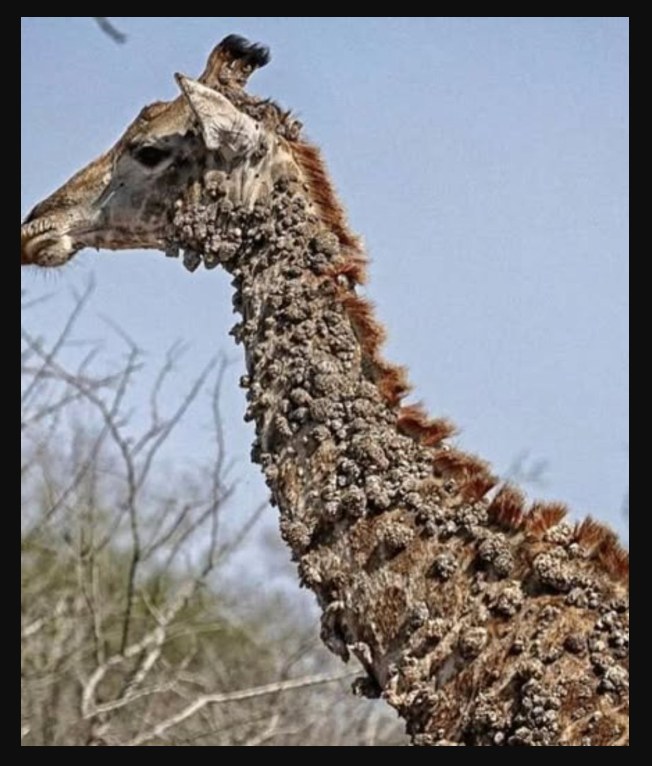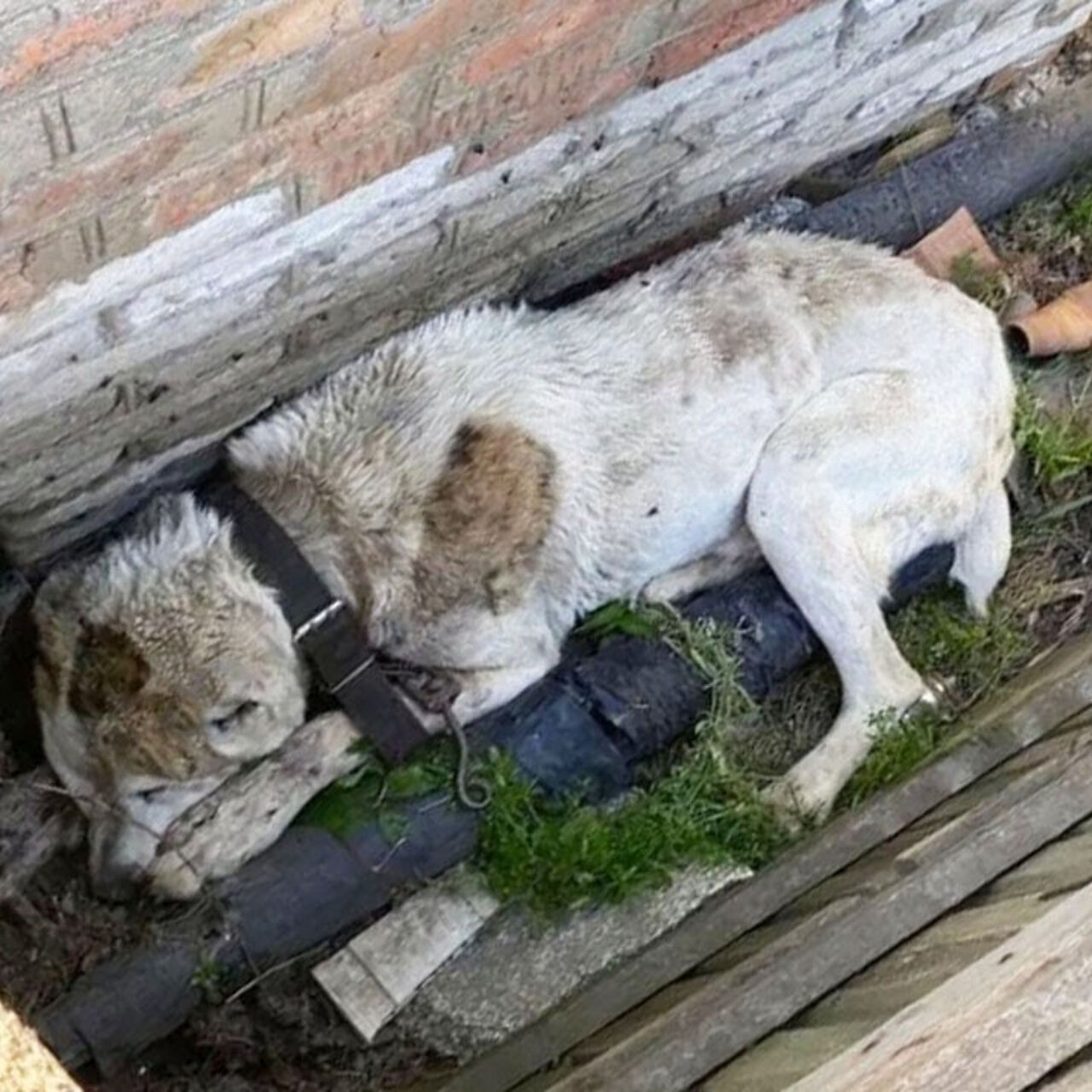A giraffe in South Africa’s Kruger National Park has captured global attention after being spotted with bark-like growths along its neck. From a distance, it resembled part of a tree, blending almost seamlessly into the dry landscape. These unusual formations are caused by papillomavirus—a viral infection that creates thick, crusty skin lesions. While the appearance is startling, the condition itself is not considered life-threatening.
Experts explain that the virus can irritate the skin and lead to secondary infections, especially if the lesions are scratched or damaged. In giraffes, the virus often spreads through oxpeckers—small birds that feed on parasites. Although generally helpful, these birds can unintentionally worsen the giraffe’s wounds. This situation highlights the complex balance within wildlife ecosystems, where even beneficial animals can sometimes contribute to harm.
Photographer Helen Olive was the first to notice the giraffe, initially mistaking it for part of the environment. “It looked like a tree until it moved,” she recalled, describing the surreal moment. Her photographs quickly gained viral attention, sparking both concern and curiosity across social media. Despite its unusual appearance, the giraffe was seen moving and feeding normally.
Papillomavirus affects many species—including humans, cattle, and rabbits—but each variant is species-specific and cannot be transmitted between them. South Africa’s giraffe population has grown to over 30,000, a promising sign for conservation efforts. Still, cases like this reveal the often-hidden challenges animals face in the wild. Nature, for all its beauty, can sometimes conceal hardship beneath the surface.




